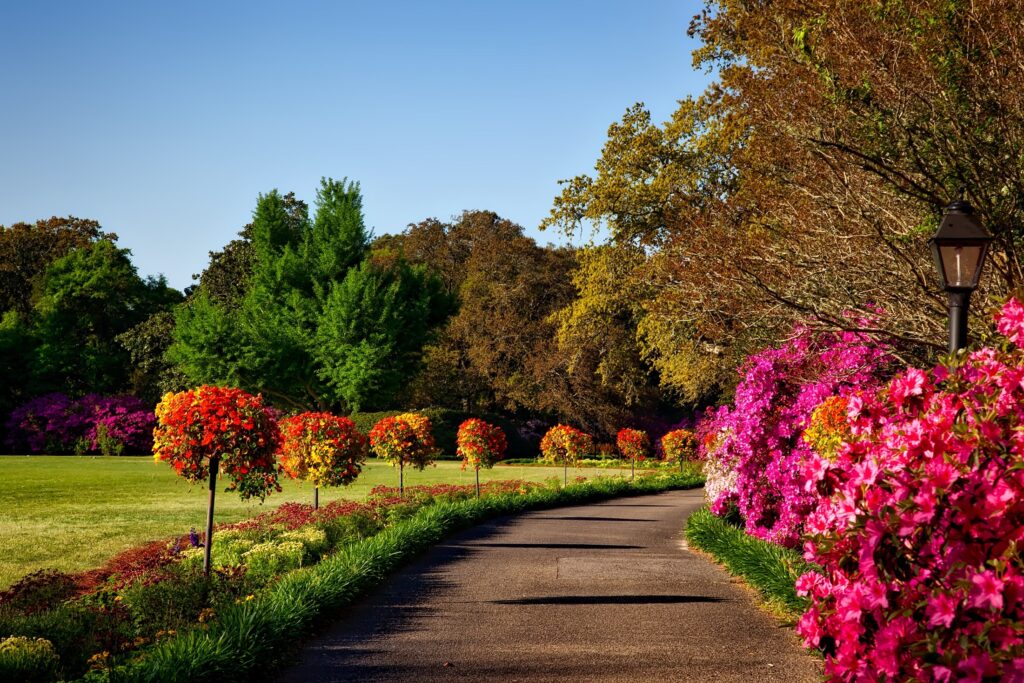To Share is to Show You Care!
Are you tired of feeling cramped in your garden space? Do you dream of having a lush oasis but are limited by the lack of space? Fret not, because in this blog post, we will unveil the best space-saving solutions to help you transform your garden into the paradise you’ve always envisioned.
1. Maximizing Vertical Space
This section focuses on utilizing the vertical dimension of your garden to make the most of limited space. Here are the detailed explanations for the points mentioned.

1.1 Vertical Gardening
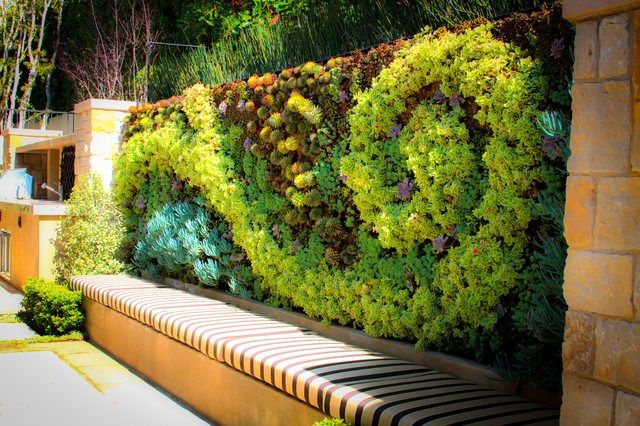
Vertical gardening involves growing plants on vertical surfaces like walls or fences using wall-mounted planters, trellises, or pallet gardens. It allows you to add greenery without taking up valuable ground space. Consider choosing suitable plants for vertical gardening and ensuring proper support for them to climb or hang.
1.2 Hanging Gardens
Hanging gardens involve suspending pots or baskets from hooks, tree branches, or pergolas. This method adds a touch of greenery at various heights, creating a dynamic and space-efficient garden. Ensure the hanging mechanisms are secure and that the plants receive adequate sunlight and water.

1.3 Tiered Vertical Planters
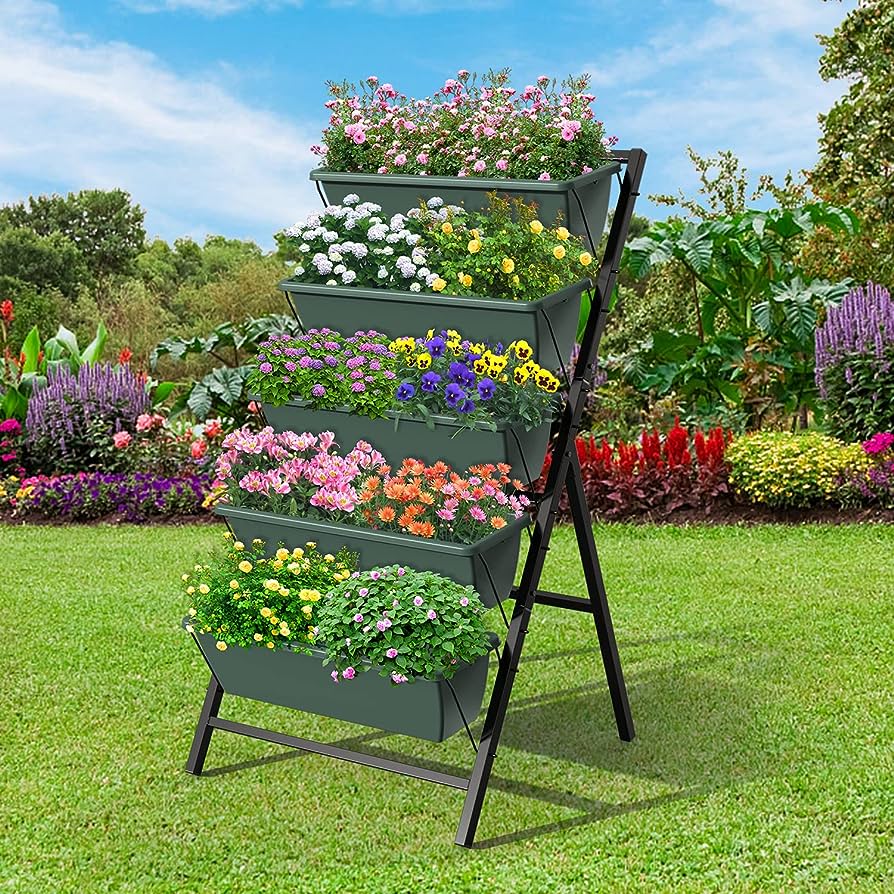
In addition to wall-mounted planters and trellises, consider tiered vertical planters. These are specially designed structures with multiple shelves or pockets for planting. They allow you to grow a variety of plants in a compact, vertical space. When using tiered vertical planters, ensure that they receive adequate sunlight and have proper drainage to prevent overwatering.
1.4 Vertical Garden Grids
Vertical garden grids are modular systems that can be customized to fit your garden’s dimensions. They consist of grid-like panels with spaces for planting pockets. You can arrange these grids along fences or walls to create a stunning vertical garden. Be sure to choose the right grid system for your space and select plants that suit the available pockets and light conditions.
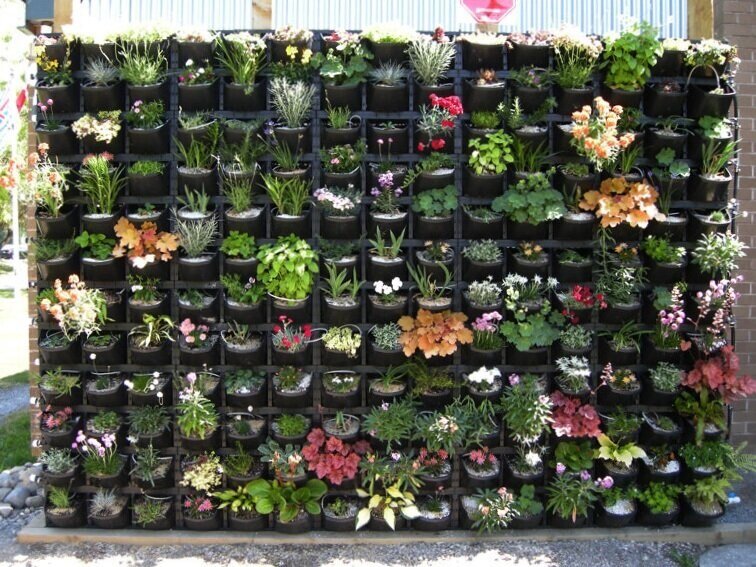
2. Compact Plant Varieties
This section discusses the importance of selecting compact plant varieties for small gardens. Here’s more detail on the 4 points mentioned.

2.1 Dwarf and Miniature Plants
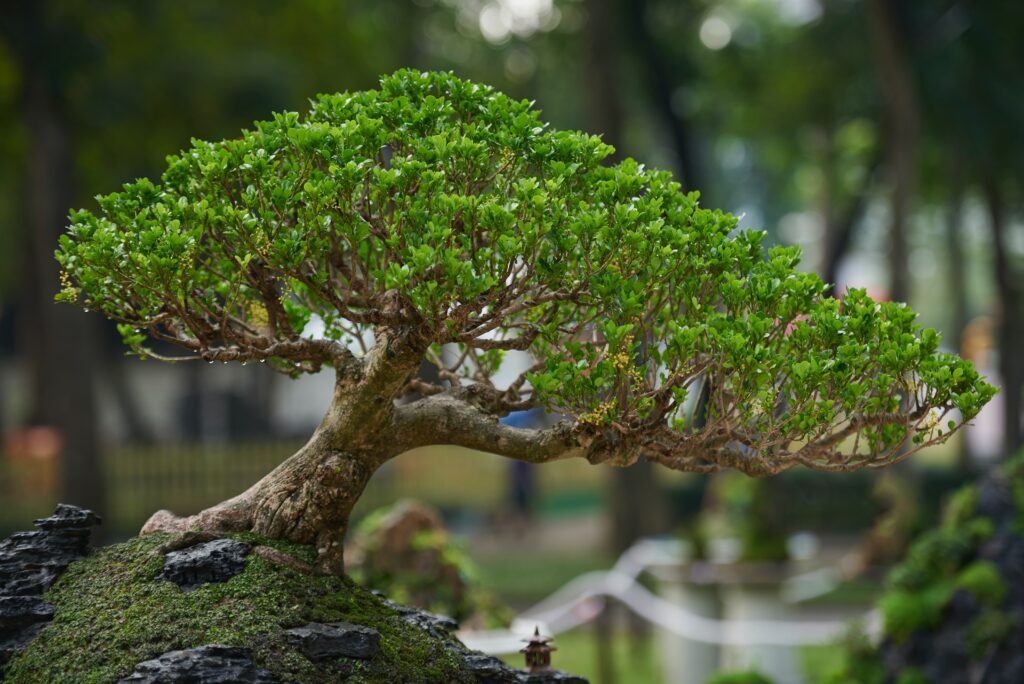
These are smaller versions of traditional plant species. They offer the same beauty and characteristics but in a more compact form, making them ideal for small gardens. Research and choose dwarf or miniature plants that thrive in your climate and suit your garden’s aesthetics.
2.2 Container Gardening
Container gardening involves planting in pots or containers of various sizes and materials. This technique provides flexibility as you can move the containers around to optimize sunlight and rearrange your garden as needed. Ensure proper drainage in the containers and choose suitable soil and plant combinations.
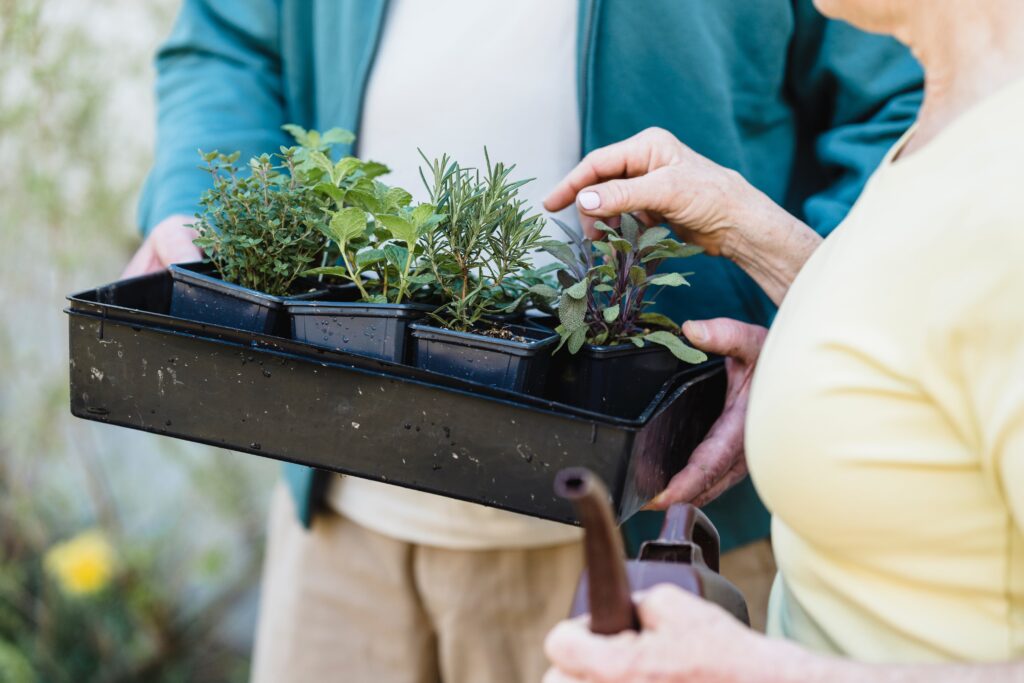
2.3 Ground Cover Plants
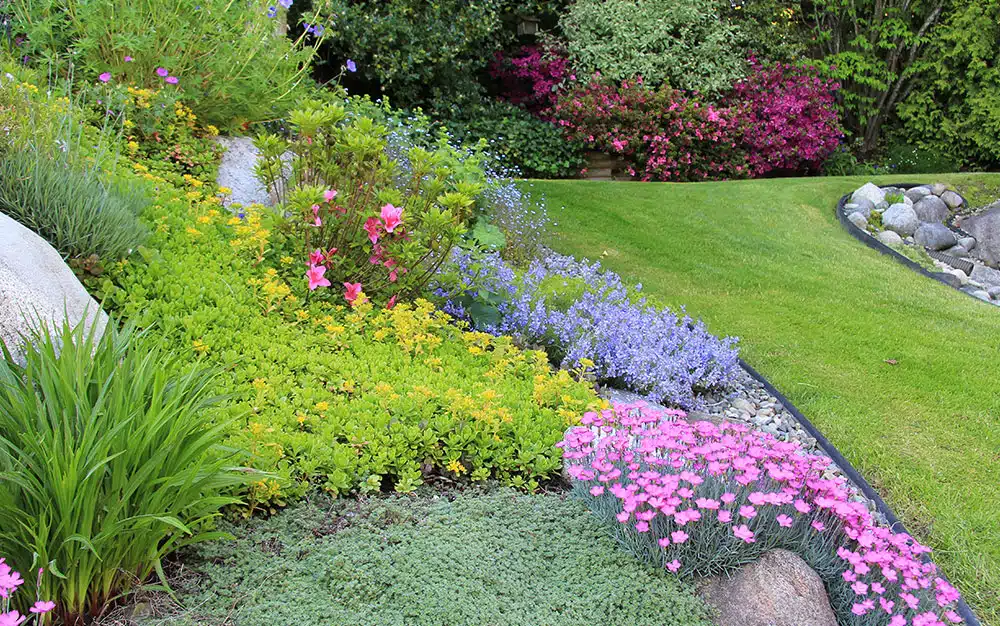
To make the most of your garden’s floor space, consider ground cover plants. These low-growing plants spread horizontally and can create a lush carpet of foliage and flowers. Some popular options include creeping thyme, moss, or low-growing sedums. Ground cover plants not only save space but also suppress weeds and add visual interest to your garden.
2.4 Edible Landscaping
Incorporate edible plants into your garden design. Many vegetables and herbs can be grown as ornamental additions to your garden beds. For example, you can plant colorful Swiss chard alongside flowers or use basil as a fragrant border plant. This way, you’re not only saving space but also enjoying the benefits of homegrown produce.
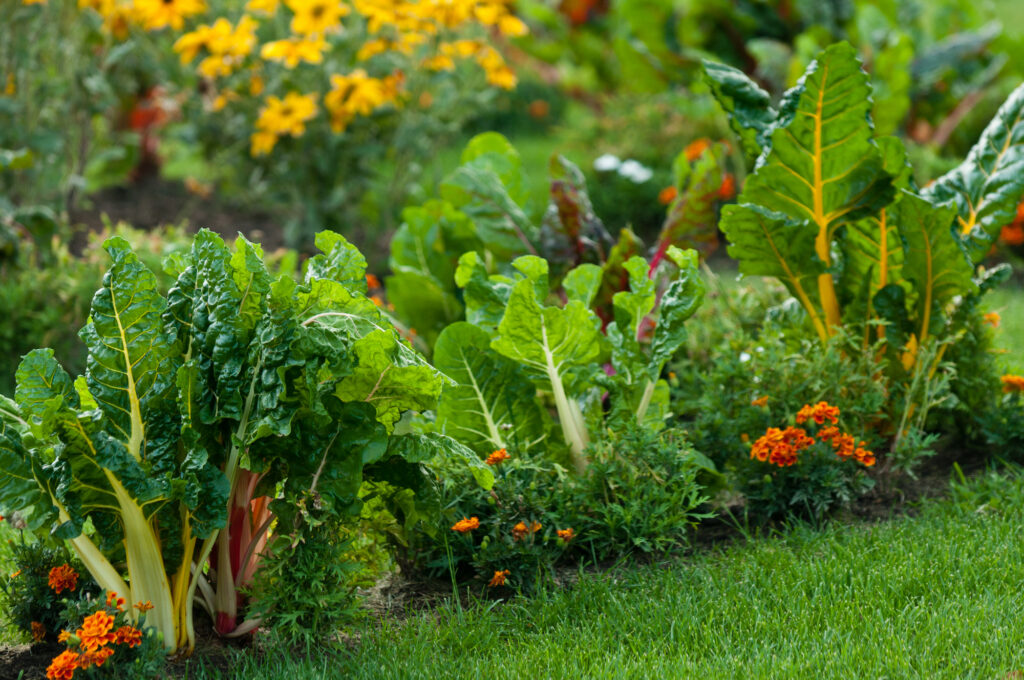
3. Space-Efficient Garden Furniture
In this section, we explore how to select garden furniture that doesn’t overcrowd your small garden. Here are the explanations for the 4 points mentioned.

3.1 Folding Chairs and Tables
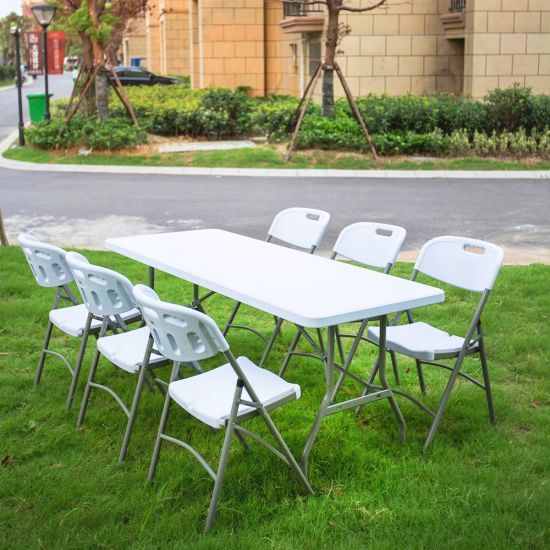
Folding furniture can be easily stored when not in use, freeing up space for other garden activities. Choose durable and weather-resistant options that match your garden’s style.
3.2 Built-In Seating
Built-in benches or seating walls can save space and add a permanent and stylish touch to your garden. You can incorporate these into existing garden features or build them as standalone elements. Ensure they are comfortable and complement your garden’s overall design.
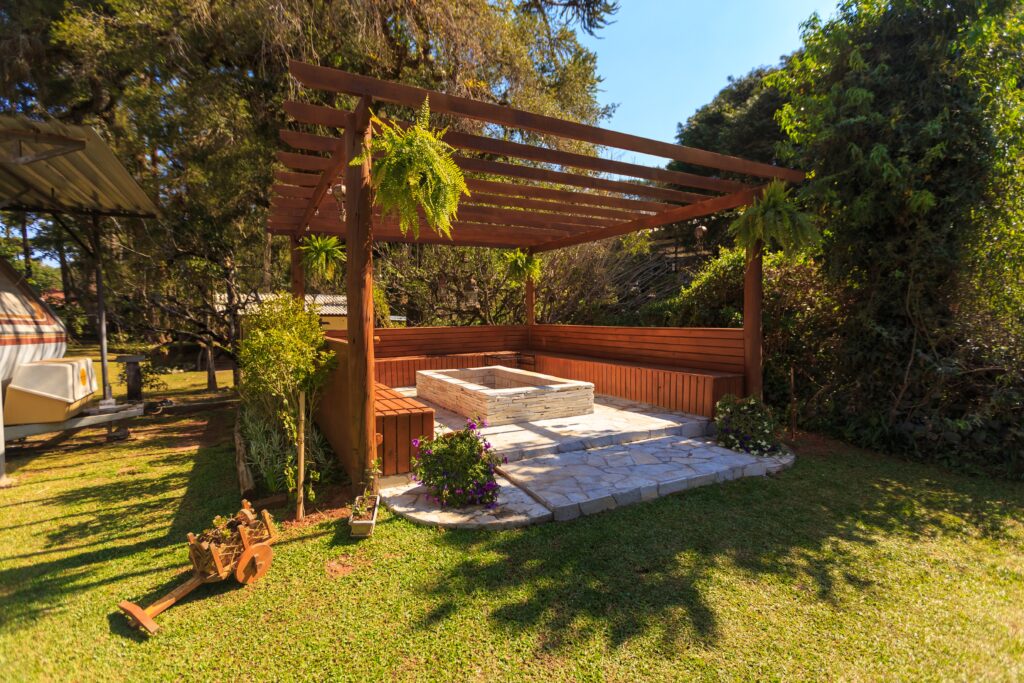
3.3 Stackable Seating
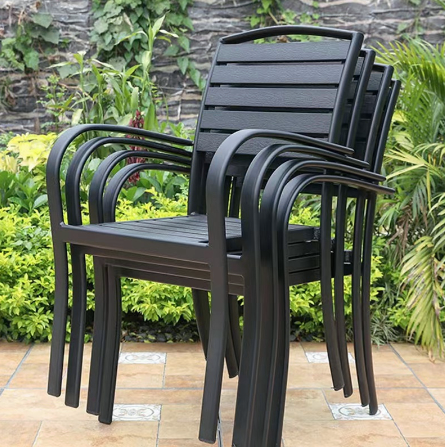
Look for stackable chairs and stools. These can be easily stacked and stored in a corner or shed when not in use. Stackable furniture is not only practical but also provides flexibility for accommodating varying numbers of guests in your garden.
3.4 Convertible Furniture
Consider investing in convertible furniture pieces. For example, some outdoor dining tables can be extended to accommodate more people when needed, and then collapsed to save space when not in use. Additionally, some benches can convert into storage containers, providing a dual-purpose solution for seating and storage.
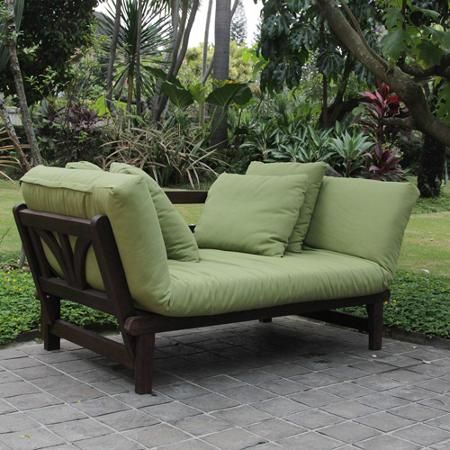
4. Multi-Functional Garden Features
This section suggests incorporating garden elements that serve multiple purposes. Here are the detailed explanations for the 4 points mentioned.

4.1 Herb Spiral
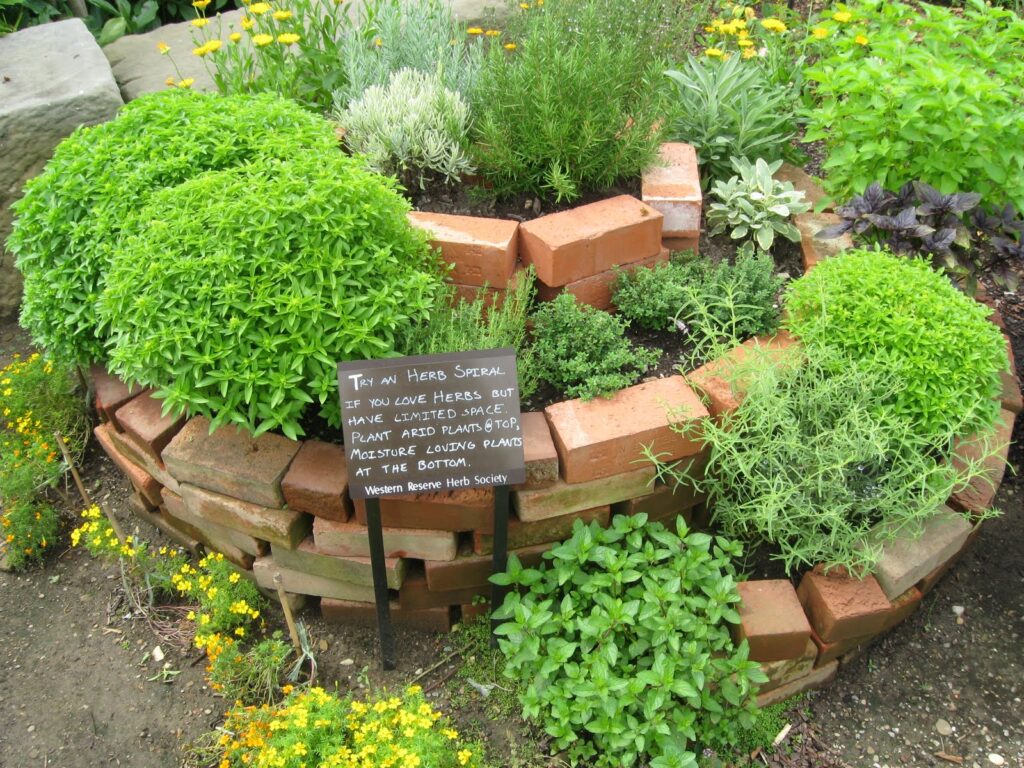
A herb spiral is a raised garden bed built in a spiral shape. It provides various microclimates for growing different herbs and small vegetables due to its varying elevations and sun exposure. Building a herb spiral requires careful planning and the right choice of herbs for each section.
4.2 Tiered Planters
Tiered planters are garden beds with multiple levels or tiers. They not only save space but also create an aesthetically pleasing garden feature. Different levels can host various plants, adding depth and visual interest to your garden. Ensure proper drainage and choose plants that thrive in different light conditions.
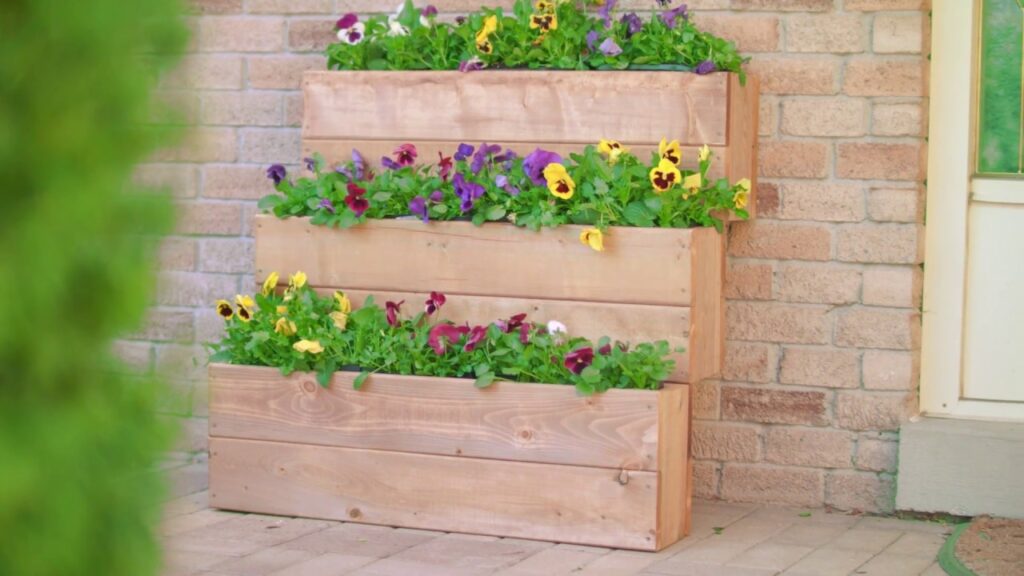
4.3 Rain Barrel with Planter Top
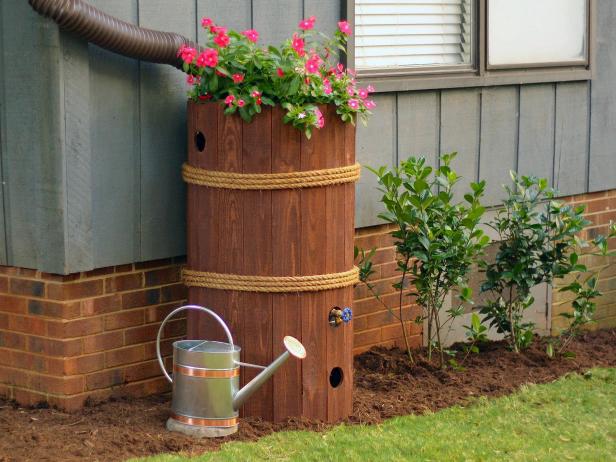
If you’re concerned about water conservation, a rain barrel with a planter top can serve dual purposes. The top of the barrel can be used to plant flowers or herbs while collecting rainwater for irrigation. This eco-friendly solution not only saves space but also reduces water bills and benefits your garden.
4.4 Mirror Illusion
Strategically placing mirrors in your garden can create the illusion of more space. Mirrors reflect light and the surrounding greenery, making your garden appear larger than it is. Ensure that the mirrors are securely mounted and placed in a way that enhances the garden’s aesthetics without being too conspicuous.
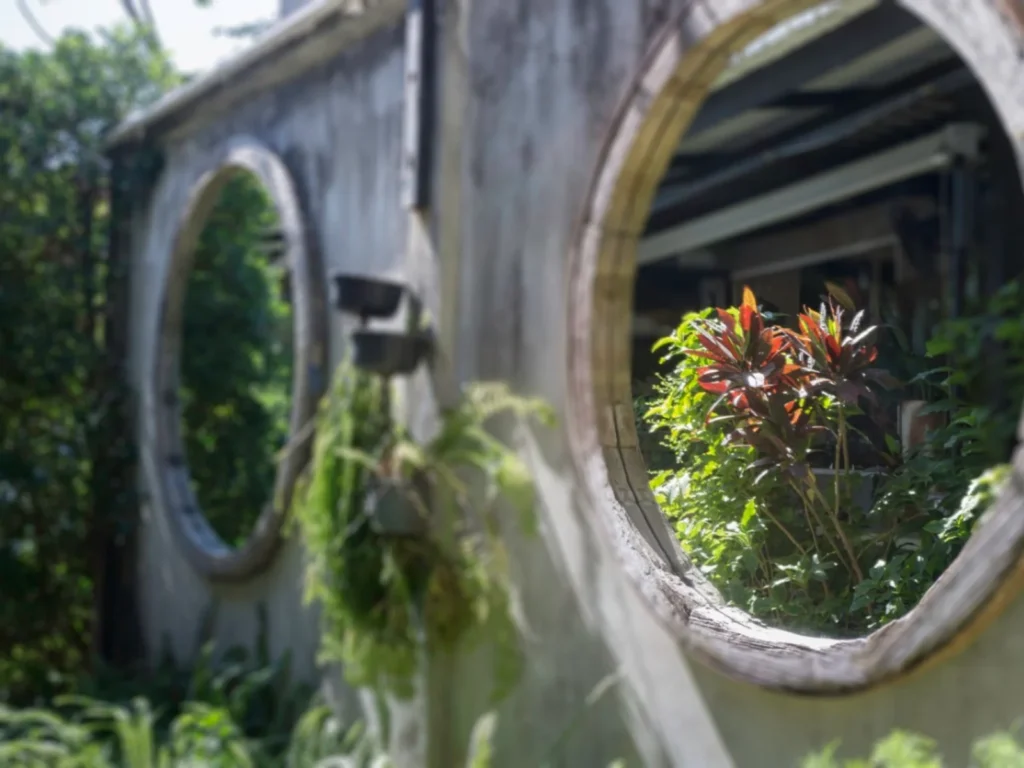
5. Vertical and Horizontal Gardening Combos
This section encourages combining both vertical and horizontal gardening techniques for a diverse and space-efficient garden. Here’s more detail on the two points mentioned:
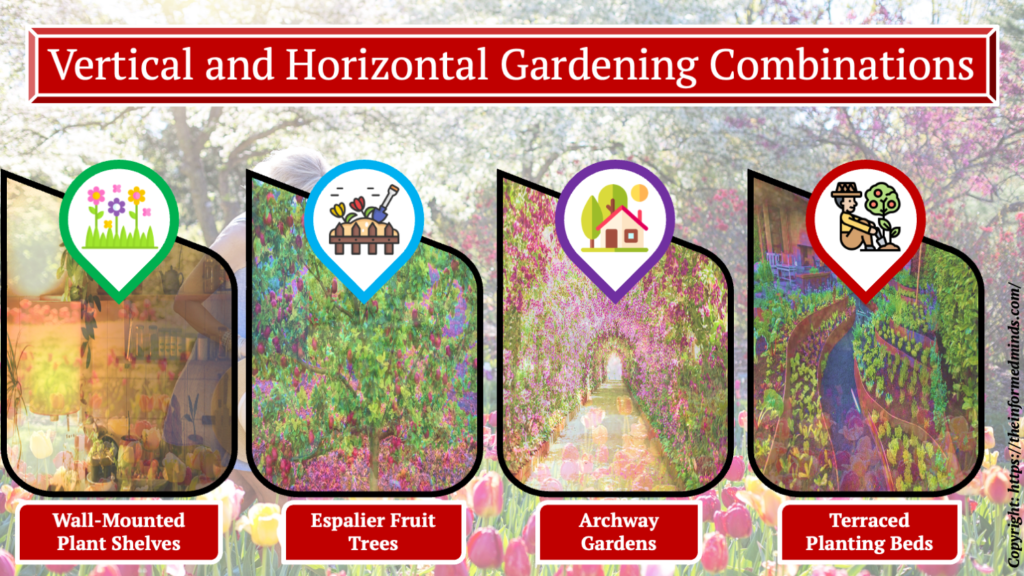
5.1 Wall-Mounted Plant Shelves
Wall-mounted shelves are installed on your garden walls to showcase potted plants while utilizing the ground space for larger plants or features. Ensure the shelves are sturdy and secure to hold the weight of the plants.
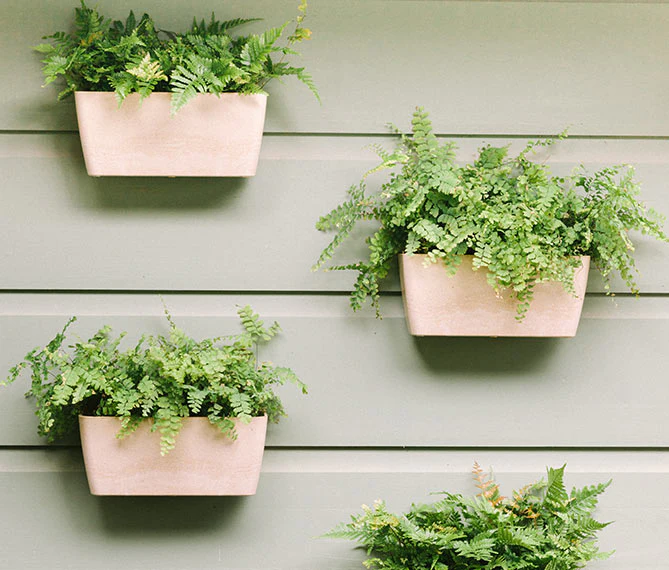
5.2 Espalier Fruit Trees
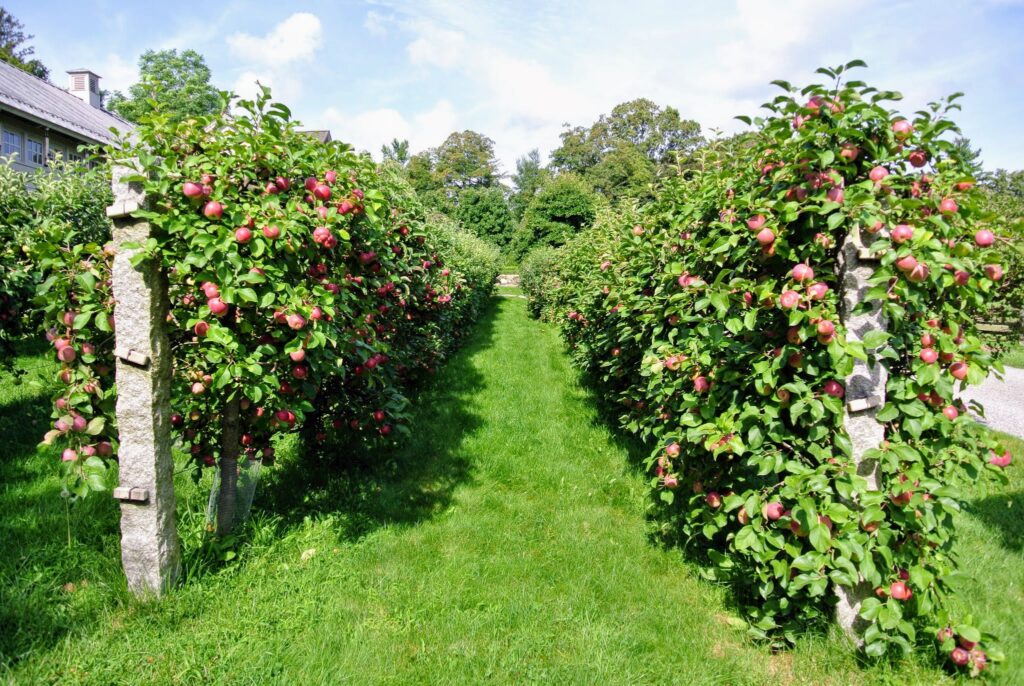
Espalier is a technique of training fruit trees to grow in a flat, two-dimensional form along a wall or trellis. This saves space and creates an artistic focal point in your garden. Proper pruning and support are essential for successfully growing espalier fruit trees.
5.3 Archway Gardens
Install garden arches or arbors that double as vertical supports and walkways. These structures create a sense of passage while also providing vertical growing space for climbing plants like roses, vines, or beans. Archway gardens add a touch of enchantment to your garden.
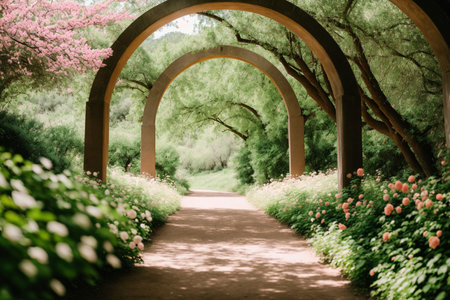
5.4 Terraced Planting Beds
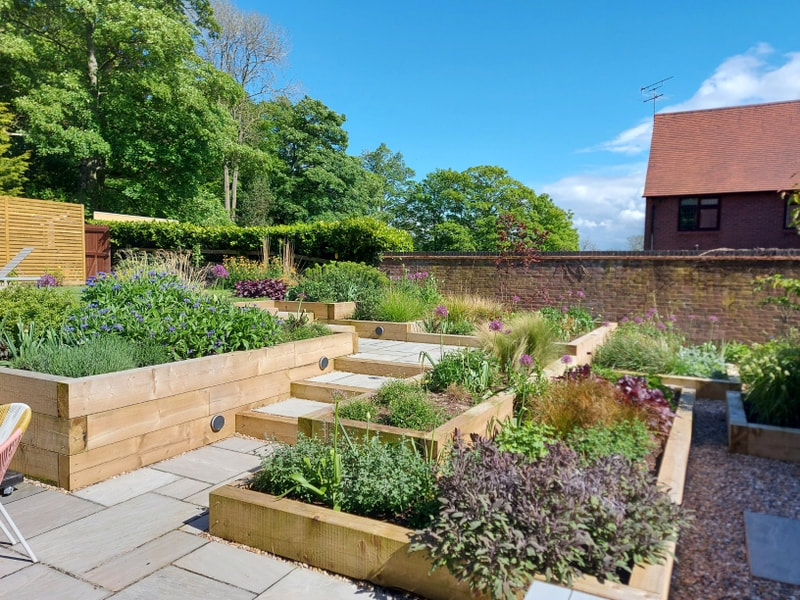
Create terraced planting beds on sloping terrain or against retaining walls. These tiered beds maximize space while adding dimension to your garden. Use each level for different types of plants or create themed gardens on each terrace, such as a herb garden, a succulent garden, or a flowering perennial garden.
Conclusion
These space-saving solutions can help you make the most of your limited garden space while creating a beautiful and functional oasis. Remember to adapt these ideas to your specific garden size, style, and climate for the best results. Happy gardening! 🌿🌼
Frequently Asked Questions
Q1: How can I save space in my garden?
A: You can save space in your garden by using vertical gardening techniques, such as wall-mounted planters and trellises. Additionally, choose compact plant varieties and consider multi-functional garden features like built-in seating or herb spirals.
Q2: How can I grow more vegetables in less space?
A: Growing more vegetables in less space can be achieved through techniques like square foot gardening, container gardening, and interplanting. These methods optimize space and allow you to grow a variety of vegetables in a compact area.
Q3: What are some strategies for growing many plants in a small amount of space?
A: Strategies for growing many plants in a small space include vertical gardening, raised beds, companion planting, and using hanging containers. These methods help maximize your planting area while minimizing space usage.
Q4: What is one strategy for getting more produce out of a small garden?
A: One strategy for getting more produce from a small garden is succession planting. This involves planting new crops as soon as one is harvested, extending your growing season and yield.
Q5: What is the cheapest way to build a room in the garden?
A: The cheapest way to create a garden room or outdoor space is often by using existing structures or repurposing materials. You can use trellises, pallets, or old furniture to define a garden area without significant expense.
Q6: How do you maximize small outdoor space?
A: To maximize small outdoor space, prioritize vertical gardening, use multi-functional furniture, keep the design uncluttered, and consider creating distinct zones for different activities like dining, lounging, and gardening.
Q7: What vegetable needs the least amount of space?
A: Lettuce is a vegetable that needs the least amount of space. It can be grown in small containers, window boxes, or even between other plants in your garden.
Q8: What vegetables don’t need much space?
A: Vegetables that don’t need much space include radishes, green onions, spinach, and herbs like basil, parsley, and chives. These can thrive in smaller garden areas or containers.
Q9: What vegetables don’t need much room to grow?
A: Vegetables that don’t need much room to grow include bush beans, Swiss chard, and kale. These compact plants can be grown in tight spaces or containers.
Q10: What vegetables yield the most?
A: Vegetables that typically yield the most produce include tomatoes, zucchini, cucumbers, and peppers. These plants can provide a bountiful harvest in the right conditions.
Q11: How do you utilize space in a small garden?
A: To utilize space in a small garden, use raised beds, plant vertically, choose compact varieties, practice intensive planting, and make use of garden accessories like trellises and hanging containers.
Q12: What is the solution to overcrowding in plants?
A: The solution to overcrowding in plants is proper spacing and thinning. Ensure plants have adequate space to grow, and thin out overcrowded areas to allow for healthier growth.
Q13: Which gardening approach grows the most yield?
A: Square foot gardening is an approach that often yields the most produce in a small space. It involves dividing your garden into square foot sections and planting specific quantities of crops in each, optimizing space and productivity.
Q14: How do I maximize my raised garden bed?
A: To maximize a raised garden bed, use quality soil, practice crop rotation, interplant compatible crops, and use trellises or cages to support vining plants. These strategies can help you get the most from your raised bed.
Q15: How do I make my backyard garden successful?
A: To make your backyard garden successful, plan carefully, choose the right plants for your climate, provide proper care with watering and fertilizing, and regularly maintain your garden by weeding and pest control. Additionally, learn from your gardening experiences and adapt your approach over time for continued success.
The Informed Minds
I'm Vijay Kumar, a consultant with 20+ years of experience specializing in Home, Lifestyle, and Technology. From DIY and Home Improvement to Interior Design and Personal Finance, I've worked with diverse clients, offering tailored solutions to their needs. Through this blog, I share my expertise, providing valuable insights and practical advice for free. Together, let's make our homes better and embrace the latest in lifestyle and technology for a brighter future.

